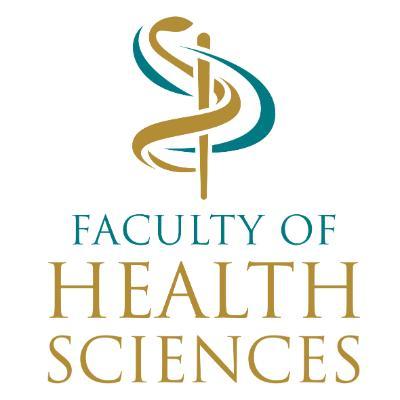Red Cell Mem and Plasmodium Research Unit
The unit carries out diagnostic investigations of red cell membrane proteins in haemolytic disorders where a membrane defect is suspected.
Head: Prof TL Coetzer
Research
The main research focus of the unit is to investigate the biology of the malaria parasite, Plasmodium falciparum. All the projects integrate bioinformatics, molecular biology and protein biochemistry techniques. These studies have generated new knowledge and enhanced the understanding of the molecular mechanisms of the parasite, which is a prerequisite for developing effective novel strategies to combat the spread of malaria. Another research focus is the evaluation of telomere dynamics in chronic myeloid leukaemia.
Research Projects
Interaction of P falciparum with the red cell membrane
Researchers: Roberto Lanzillotti and Sonja Lauterbach
Protein-protein interactions between P falciparum and the host erythrocyte membrane have been investigated by performing in vitro binding assays and pull-down experiments with a recombinant parasite invasion protein, EBA181 and recombinant functional domains of human red cell protein 4.1. Biochemical studies have also been performed on a P falciparum aminopeptidase that interacts with spectrin, the major red cell membrane protein. The recombinant parasite enzyme is active and kinetic parameters have been established. These findings have provided insight into the molecular mechanisms of parasite invasion of red blood cells.
P falciparum gene regulation
Researchers: Danny Meyersfeld and Gillian Baker
Gene regulation in P falciparum is poorly understood, especially at the level of transcription. A recombinant N-terminal domain of P falciparum PfMyb2 was shown to bind to DNA regulatory sequences. A 2.7kb DNA fragment encoding the full length PfMyb2 protein has been cloned into an expression vector and mobility shift assays will further evaluate its role as a putative transcription factor. Bioinformatic analysis has indicated a high degree of homology to mammalian cdc5, which plays a role in transcription as well as RNA processing.
Analysis of P falciparum glycerol kinase
Researcher: Kuben Naidoo
Glycerol kinase catalyzes the ATP-dependant phosphorylation of one of the precursors of glycerolipids, which are important components of cell membranes. P. falciparum glycerol kinase has been cloned into a bacterial expression vector. Due to incompatible codon usage and other factors, the GST fusion protein is expressed mainly in an insoluble form. Various strategies have been employed and small amounts of soluble, active enzyme have been obtained. Biochemical characterisation of the enzyme will shed light on its role in parasite development.
Molecular mechanisms involved in the maintenance and evolution of the P falciparum genome
Researcher: Pierre Durand An analysis of mobile genetic elements in three species of Plasmodium was completed: P. falciparum, P. vivax and the model rodent malaria parasite P. yoelii yoelii. The findings provided new insight into the role of mobile elements in the evolution of the unusual P falciparum genome. Putative reverse transcriptase-encoding genes were also identified and the main functional domains of the P falciparum genes have been cloned into an expression vector for analysis of the recombinant proteins.
- Telomere dynamics in chronic myeloid leukaemia
Researcher: Marcel Gil Human telomeres protect chromosome ends and are maintained by a specialized reverse transcriptase, telomerase. Measurement of telomere length, telomerase RNA expression and telomerase activity in chronic myeloid leukaemia (CML) patients revealed changes in telomere dynamics compared to controls. To evaluate the role of the abnormal bcr-abl fusion protein, characteristic of CML, in the regulation of telomerase, phosphorylation assays have been optimized.
Sources of Funding in 2006
- National Research Foundation
- NHLS Research Trust (2 grants)
- MRC
- University of the Witwatersrand Medical Faculty Research Endowment Fund
Publications 2006
Roberto Lanzillotti and Theresa L Coetzer Malaria Journal 2006, 5:100 The 10kDa domain of human erythrocyte protein 4.1 binds the Plasmodium falciparum EBA-181 protein.
Pierre M Durand, Andries J Oelofse and Theresa L Coetzer BMC Genomics 2006, 7:282 An analysis of mobile genetic elements in three Plasmodium species and their potential impact on the nucleotide composition of the P. falciparum genome.
Chen G, Lui E, Naidoo K, Popat U, Coetzer TL and Prchal JP Haematologica / The Hematology Journal 2006, 91:41 Idiopathic myelofibrosis without dacrocytes
Conference Presentations 2006
Keystone Symposium on Malaria: Functional Genomics to Biology to Medicine New Mexico, February 2006
Roberto Lanzillotti and Theresa L Coetzer The 10kDa domain of human erythrocyte protein 4.1 binds a myosin-like motif in the Plasmodium falciparum EBA-181/JESEBL protein.
South African Society for Biochemistry and Molecular Biology, XXth Conference Pietermaritzburg, July 2006
Roberto Lanzillotti and Theresa L Coetzer The 10kDa domain of human erythrocyte protein 4.1 binds the Plasmodium falciparum EBA-181 invasion protein.
Lauterbach, SB and Coetzer, TL Characterisation of PFI1570c, a Plasmodium falciparum aminopeptidase
D Meyersfeld and TL Coetzer Functional characterisation of the DNA binding domains of Plasmodium falciparum Myb2 (PfMyb2)
Gillian L Baker and Theresa L Coetzer Bioinformatic analysis of PfMyb2, a Plasmodium falciparum DNA-binding protein
Naidoo, K and Coetzer, TL Expression and Purification of Plasmodium falciparum Glycerol Kinase
Durand, P Oelofse, AJ and Coetzer, TL Potential mobile genetic elements and their derivatives in two Plasmodium species
Awards
- Danny Meyersfeld was awarded a Claude Leon postdoctoral fellowship.
- Roberto Lanzillotti was awarded a University of the Witwatersrand postdoctoral fellowship. He was also awarded joint first prize for his oral presentation at the University of the Witwatersrand, Faculty of Health Sciences Research Day, August 2006.
Collaborations
- Prof Manuel Llin - Princeton University, USA
- Dr Catherine Vaquero, INSERM, Paris, France


